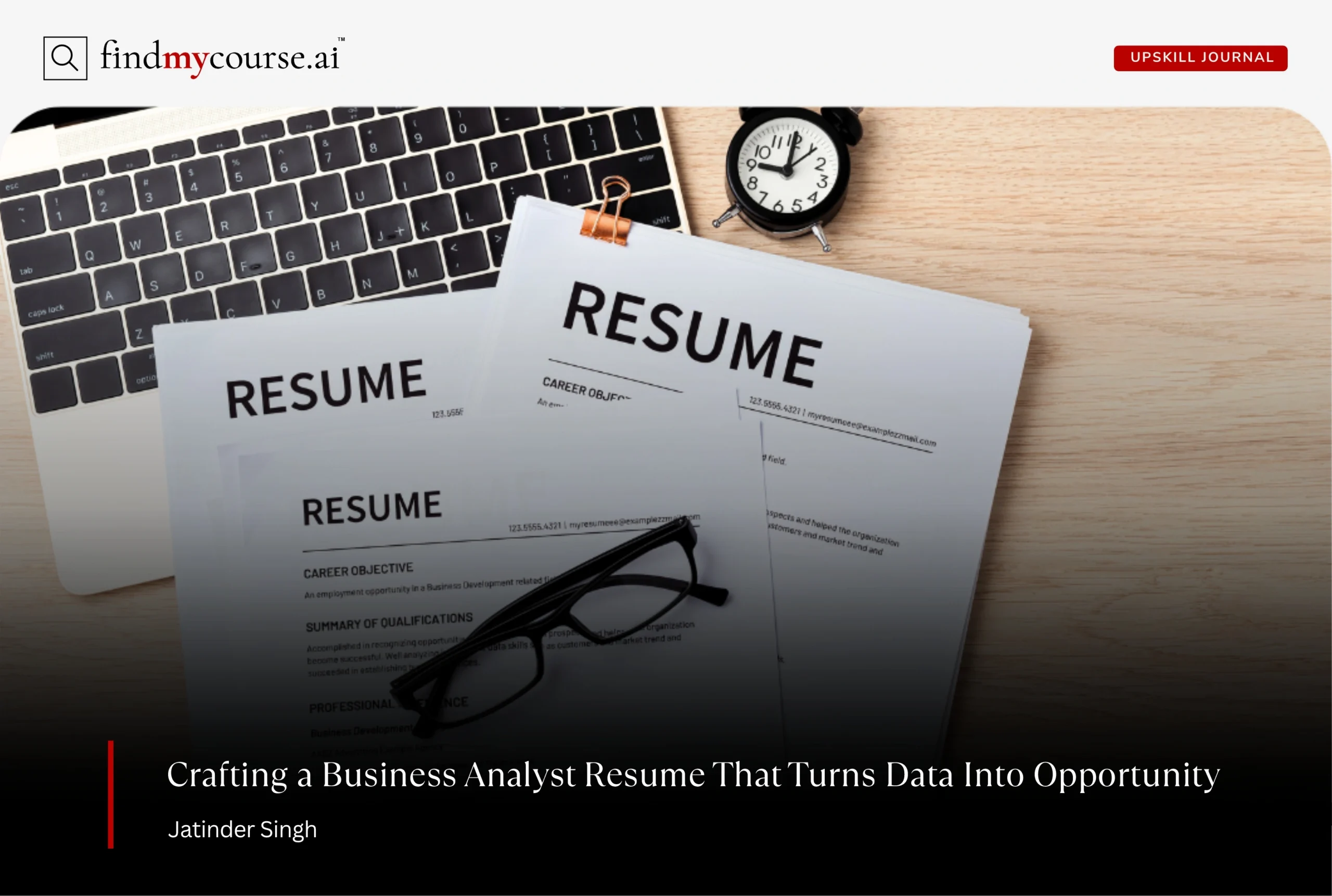You’ve spent years solving problems, connecting dots, and helping teams make smarter decisions. But when it comes to landing your next big role, there’s one problem left to solve—how to translate all that analytical brilliance onto a single page. And that’s where your business analyst resume comes in. It’s more than a document; it’s your professional story told through evidence, strategy, and impact. In 2025’s fiercely competitive job market, your resume needs to do more than show what you know—it must prove what you deliver.
As companies increasingly rely on data to steer every choice, business analysts have become essential to innovation and growth. You’re not just gathering requirements or building reports—you’re influencing business direction and shaping smarter, faster decisions. So, how do you make your resume reflect that level of value? Let’s explore the strategies, examples, and insider tips that will help you stand out—and secure the role that matches your true potential.
What Employers Look for in a Business Analyst Resume in 2025
Recruiters in 2025 want business analysts who can do more than crunch numbers—they want professionals who connect insights to impact. A winning business analyst resume must prove you can translate data into decisions that drive business performance.
Today’s hiring managers look for evidence of outcomes, not just tasks. Use metrics and action verbs: instead of “Generated reports,” write “Developed dashboards that cut reporting time by 30%.” Each bullet should reveal measurable change. Additionally, highlight collaboration and communication. Analysts often bridge technical and business teams, so showing how you influenced decisions or aligned stakeholders sets you apart. Finally, demonstrate adaptability and continuous learning. Mention certifications, analytics tools, or recent learning efforts that show you’re evolving with the field.
In short, your resume should read like a results-driven business case—proving you don’t just analyze data, you make data matter.
How to Structure an Impressive Business Analyst Resume
A clear, logical structure enhances readability and captures a recruiter’s attention within seconds. Let’s break down what each section should include.
1. Header and Contact Information
Your resume’s header is your first impression—make it count. Start with your full name in bold, followed by your professional title (e.g., Business Analyst | Data-Driven Problem Solver). Include essential contact details: phone number, professional email, and an updated LinkedIn profile that aligns with your resume content.
Keep the layout clean and modern—no clutter, no personal details like a full street address or photo (unless required in your region). Recruiters should be able to glance at the top of your resume and know exactly who you are, how to contact you, and what you do.
2. Professional Summary
In three to four concise lines, summarize your career highlights. Focus on what you can deliver. For example:
“Data-driven business analyst with 5+ years of experience translating insights into strategic growth opportunities. Skilled in stakeholder collaboration, process automation, and predictive analytics.”
This section should immediately position you as a value-creator, not just a job seeker.
3. Key Skills
Include both technical and soft skills. For instance:
- Technical: SQL, Tableau, Python, Excel, Power BI, Agile/Scrum
- Soft Skills: Analytical thinking, communication, problem-solving, stakeholder management
Moreover, tailor this list to each job description. Many organizations use Applicant Tracking Systems (ATS), which scan resumes for keyword alignment.
4. Professional Experience
Use bullet points and quantify achievements wherever possible. Instead of writing “Responsible for analyzing business requirements,” write:
- “Analyzed operational data to identify inefficiencies, reducing process cycle time by 15%.”
- “Collaborated with cross-functional teams to implement a CRM system that increased client retention by 12%.”
Each statement should demonstrate results, not just responsibilities.
5. Education and Certifications
List degrees, relevant coursework, and certifications such as:
- Certified Business Analysis Professional (CBAP)
- PMI Professional in Business Analysis (PMI-PBA)
- Google Data Analytics Professional Certificate
In addition, if you’ve completed specialized courses in data visualization or agile project management, include them. These show commitment to continuous learning and adaptability.
Business Analyst Resume: Formatting Best Practices
Presentation matters as much as content. Recruiters often skim resumes in under 10 seconds, so clarity and layout are crucial.
Keep It Professional and Clean
Choose a modern, readable font like Calibri or Lato, with sufficient white space. Use bold for headings and bullet points for achievements. Avoid unnecessary graphics unless you’re in a creative industry.
Use the Right Resume Format
There are three common types:
- Reverse-chronological (most popular): Lists recent experiences first—ideal if you have solid work history.
- Functional: Focuses on skills over experience—great for career changers.
- Hybrid: Combines both—useful for highlighting skills while maintaining a career timeline.
Therefore, select the format that best tells your professional story.
Quantify Your Impact
Numbers make your results tangible. Whether it’s cost reduction, time saved, or revenue growth, quantify wherever possible. For example:
“Implemented data reporting dashboards that improved decision-making efficiency by 25%.”
Optimize for ATS
Ensure your business analyst resume includes job-specific keywords naturally. However, avoid keyword stuffing—write authentically for human readers. Tailor your resume for each role; even small adjustments can significantly increase your interview chances.
Example of a Winning Business Analyst Resume Summary
Example 1 (Mid-Level Professional):
“Strategic business analyst with six years’ experience in banking and fintech. Expert in data visualization, regulatory reporting, and stakeholder communication. Improved risk analysis efficiency by 20% through process automation.”
Example 2 (Entry-Level/Graduate):
“Recent business analytics graduate skilled in SQL, Excel, and Power BI. Experienced in translating data insights into actionable business recommendations through academic projects and internships.”
These examples demonstrate clarity, results, and value—all in under 60 words.
Common Mistakes to Avoid
Even strong candidates can lose opportunities due to resume errors. Here are key pitfalls to avoid:
- Using a Generic Resume: Tailor your resume for each role. Customization shows genuine interest and alignment with company needs.
- Listing Duties Instead of Results: Focus on achievements—what impact did you make?
- Neglecting Soft Skills: Business analysts interact across teams; communication and leadership matter.
- Ignoring ATS Optimization: Failing to include relevant keywords can prevent your resume from reaching recruiters.
- Overcomplicating Design: Simple, clean layouts outperform overly designed templates in professional roles.
In addition, proofread carefully—typos or inconsistent formatting can instantly weaken your credibility.
Final Tips for 2025 Job Seekers
In 2025, data literacy and business insight are inseparable. Employers value analysts who not only interpret numbers but also influence decisions. To stay relevant, embrace continuous learning—emerging tools like AI analytics platforms and data storytelling techniques are shaping the next generation of business analysis.
Moreover, leverage your business analyst resume as a living document. Update it regularly with measurable achievements, new certifications, and projects that reflect your evolving expertise. Your resume is your professional handshake—make it confident, data-driven, and human. Combine clarity with authenticity, and you’ll not only get noticed but remembered. And if you ever feel stuck or have some questions, just ask our AI assistant for guidance.


